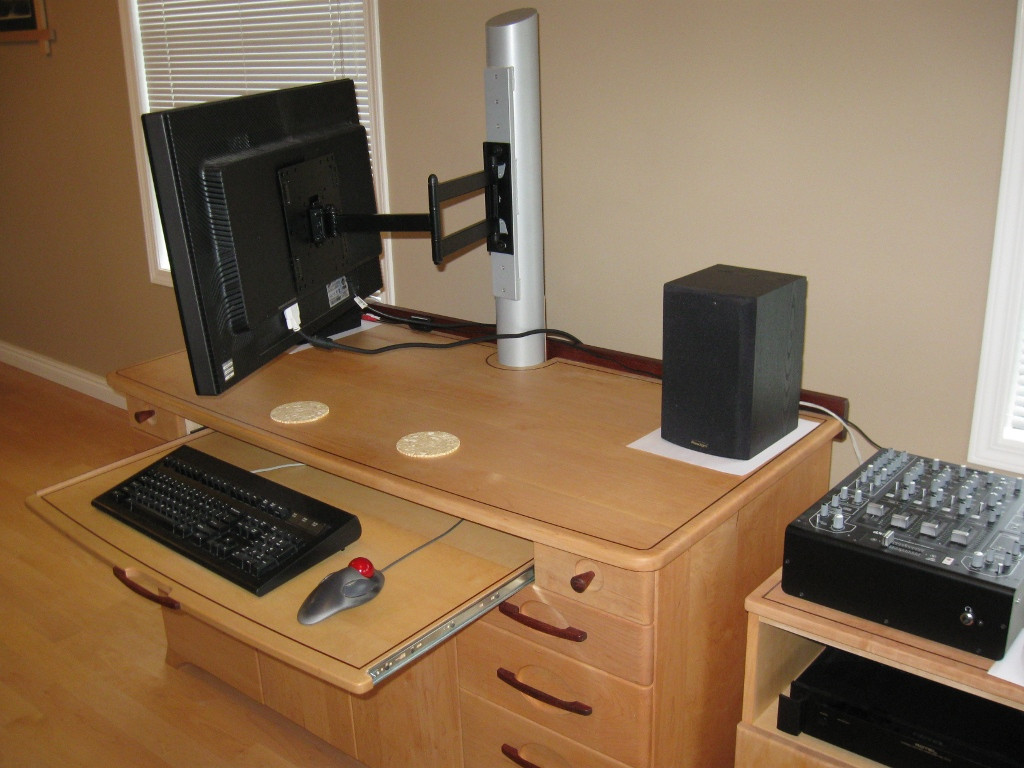Background
I am looking to increase the versatility of a desk by allowing the monitor to raise and lower, using a manual mechanical solution (i.e., no electric motors). I am trying to make adjusting the monitor height be as quick and effortless as possible, while eliminating the risk of "dropping" the monitor.
The situation is depicted here:

The items involved in this problem include:
- a monitor of ~12kg, with dimensions of 449.6mm x 690.2mm x 83mm;
- a single post of 10cm in diameter, made from 5mm thick steel; and
- an arm of ~3.1kg, with a maximum extent of 37cm.
The extensible arm provides a great deal of motion. The post is notched at the bottom, resting on a type of halved joint, and secured at the back of the desk by thick wood slats.
The monitor needs to have about two feet of motion so that I can stand while working. (Lifting the entire desk would be much [$10k] too costly!)
Problem
As described in this physics answer, the compressive force and the moment conveyed to the post are fairly significant. I'm looking for a solution that would allow the monitor to raise and lower and lock, even if it meant having to retract the monitor close to the post while adjusting the height.
To raise the monitor with the current situation requires unscrewing the post, hoisting it, and reattaching the screws. This is both dangerous (for the monitor) and time-consuming.
Post and Track
The faceplate welded to the post has 10 threaded holes drilled into it (barely visible in the above photograph). I think I need a two-piece sliding track mechanism. One piece attaches to the post and the other attaches to the extensible arm. The logistics resemble:

Question
What type of sliding track mechanism would allow the monitor to raise and lower without much effort, time, or potential for accidentally dropping the monitor onto the desk?








 Except our showerhead is much more substantial than in this photo and exerts fair bit of torque on the slider assembly. So much so that we barely have to tighten the slider.
Except our showerhead is much more substantial than in this photo and exerts fair bit of torque on the slider assembly. So much so that we barely have to tighten the slider.
